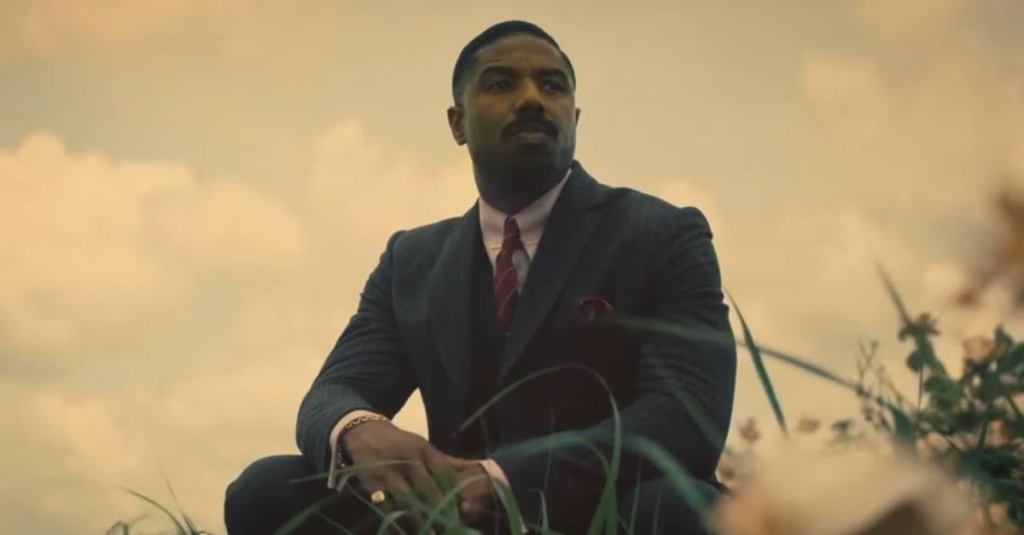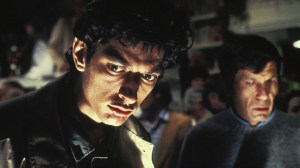Ryan Coogler’s Sinners hit theaters earlier this month and immediately became a critical and box office sensation, blending supernatural horror with the raw history of the American South. Starring frequent collaborator Michael B. Jordan in a stunning dual role, the film plunges viewers into the Mississippi Delta of 1932, a world steeped in blues, oppressive Jim Crow laws, and literal bloodsuckers. Given its powerful mix of historical detail and genre thrills, many fans are asking: Is Sinners actually based on real events? The short answer is no, as the core story involving twin brothers, vampires, and a haunted juke joint is entirely the product of Coogler’s imagination. However, dismissing it as pure fiction ignores the brutal historical reality that serves as Sinners‘ terrifying foundation.
Videos by ComicBook.com
WARNING: Spoilers below for Sinners
Unlike Coogler’s previous acclaimed work, such as the true-story adaptation Fruitvale Station or his franchise entries Creed and Black Panther, Sinners stands as his first wholly original blockbuster screenplay. The film follows twin brothers Elijah “Smoke” Moore and Elias “Stack” Moore (both played by Jordan), who return to their Mississippi hometown after running with gangsters in Chicago. Their plan is to use stolen cash to establish a juke joint, a sanctuary of music and community for Black folks living under the constant threat of racial violence and segregation. Their ambition puts them on a collision course not only with the local Ku Klux Klan but also with a terrifying supernatural evil embodied by vampires stalking the Delta.
In Sinners, Coogler deliberately mixes horror with elements of drama, action, musical, and southern gothic thriller. This genre fluidity is central to the film’s exploration of the real-world horrors faced by Black Americans during that era, using the familiar language of vampires to explore themes of sin, exploitation, and the fight for survival and ownership in a hostile land.
Mississippi Under Jim Crow: Sinners‘ Historical Setting

The Mississippi Delta in 1932, the specific setting chosen for Sinners, was a place defined by the oppressive system of Jim Crow laws. These state and local laws enforced strict racial segregation and discrimination against Black Americans following the Reconstruction era. In Mississippi, like much of the South, Jim Crow dictated nearly every facet of public and private life. Segregation was mandated in schools, public transportation, hospitals, restaurants, restrooms, drinking fountains, and even cemeteries. Signs reading “Whites Only” and “Colored” were pervasive, reinforcing the ideology of white supremacy. Mississippi’s laws were particularly stringent, prohibiting interracial marriage and even criminalizing the act of suggesting social equality between races.
Beyond segregation, Black citizens were systematically disenfranchised. Mississippi led the way in implementing measures like poll taxes and literacy tests specifically designed and unfairly applied to prevent Black men from voting, effectively removing their political power. Furthermore, economic exploitation was rampant, particularly in the Delta’s agricultural economy. The sharecropping and tenant farming systems trapped many Black families in cycles of debt to white landowners, offering little chance for economic advancement. Sadly, the Great Depression exacerbated these conditions, leading to increased poverty, displacement, and competition for even menial jobs.
[RELATED: 10 Vampire Movies to Watch After Sinners]
Compounding the legal and economic oppression was the constant threat of racial violence. Vigilante groups, most notably the Ku Klux Klan, used terror and violence to enforce the racial hierarchy, often acting with the implicit or explicit approval of local authorities. This atmosphere of pervasive fear, legal subjugation, and economic hardship forms the historical reality into which Sinners‘ fictional characters are placed.
However, Sinners does put a spotlight on one interesting aspect of the culture at the time: the important cultural bridge created by the Chinese community of the Delta region. Viewers are having their collective minds blown to learn that characters like Bo and Grace Chow (actors Yao and Li Jun Li) and the store they operated were all based on very real history. The small community of Chinese immigrants in the area was allowed on both sides of the color line, offering goods and services to the local black community that might’ve otherwise been excluded from them. More proof of just how much cultural research Ryan Coogler did to create the world and characters of the film.
Why Is Delta Blues So Important to Sinners?

Amidst the hardships of the Jim Crow South, distinct forms of Black cultural expression flourished, providing community, solace, and resistance. Delta blues music, a style born in the Mississippi Delta region, is central to Sinners‘ atmosphere and plot. Emerging from earlier traditions like work songs, field hollers, and spirituals, Delta blues developed in the late 19th and early 20th centuries. It became a defining sound of the region, characterized by soulful vocals, acoustic guitar, and themes reflecting the joys and sorrows of life under oppression.
Pioneering artists like Charley Patton, Son House, and Robert Johnson, who were active or influential during the 1930s setting of the film, shaped this genre. In addition, legends surrounding figures like Robert Johnson, who supposedly sold his soul to the devil at a crossroads near Clarksdale for musical talent, speak to the music’s deep connection to folklore and the supernatural, an element echoed in Sinners‘ plot.
Juke joints were the crucibles where Delta blues thrived. These informal establishments, often located in rural areas and housed in simple shacks or repurposed buildings, served as vital social hubs for Black communities. In a segregated society, juke joints offered rare spaces where Black people could gather freely, socialize, drink, dance, and listen to live music without white oversight. They were places of refuge, celebration, and cultural affirmation. As depicted in Sinners, establishing a juke joint represented an act of entrepreneurship and community building within an oppressive system. These venues allowed musicians to share styles, develop their craft, and provide entertainment and escape for patrons enduring the daily grind of life in the Delta.
Sinners‘ Hoodoo Is a Real Spiritual Practice

Another significant cultural element woven into the fabric of Sinners is Hoodoo. Hoodoo, also known as conjure or rootwork, is a set of African American folk magic and spiritual practices that originated in West African spiritual traditions brought over during the transatlantic slave trade. Over time, these traditions blended with elements of Native American herbal knowledge, European folk magic, and Christian beliefs, particularly using Psalms from the Bible. It developed primarily in the Southern United States within enslaved communities and continued to be practiced widely during the Jim Crow era.
Hoodoo is not a religion with a set dogma or clergy, but rather a practical system for addressing everyday life’s challenges and desires. Practitioners, often called rootworkers or conjure doctors, utilize herbs, roots, minerals, animal parts, personal items, and spoken charms or prayers to achieve specific goals. Common aims include healing, protection from harm or evil influences, attracting love or money, ensuring justice, or gaining power under challenging situations. In the context of slavery and later Jim Crow, Hoodoo offered ways for people to seek protection from violence, exert influence in situations where they had little formal power, and maintain a connection to ancestral knowledge and spiritual strength.
How did you enjoy Sinners‘ use of real history to build a fictional horror story? Join the discussion in the comments!








